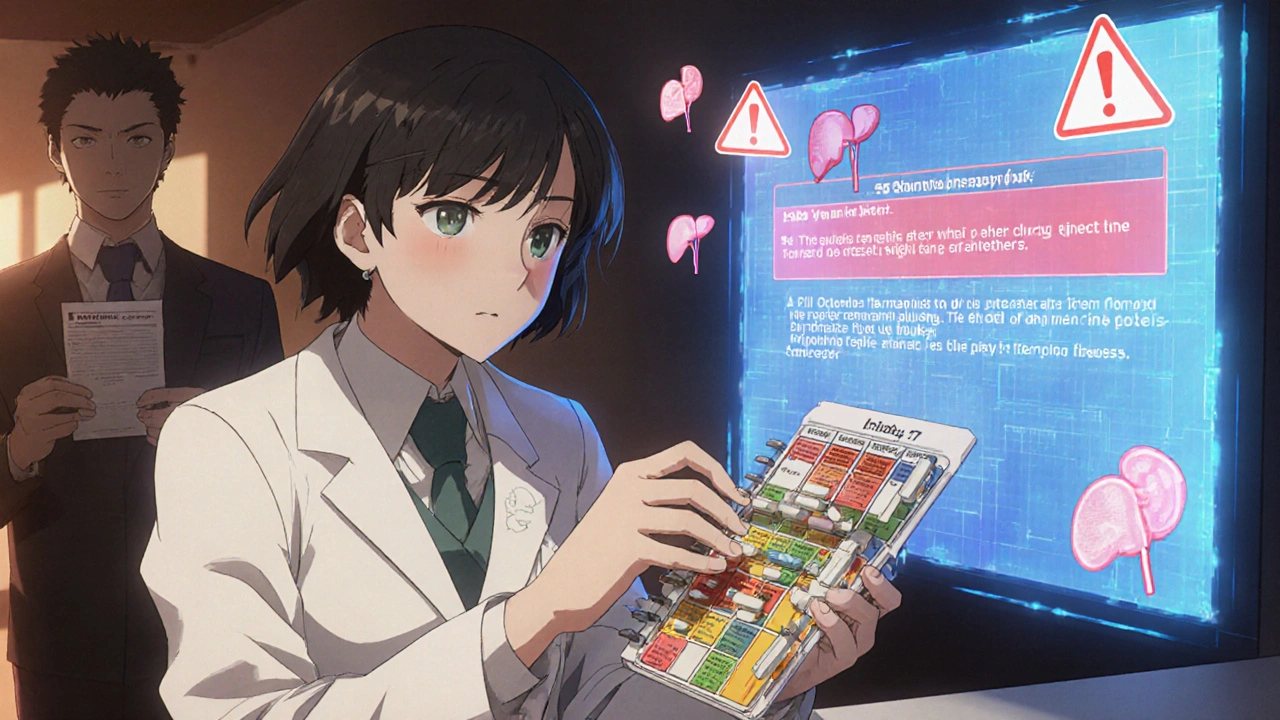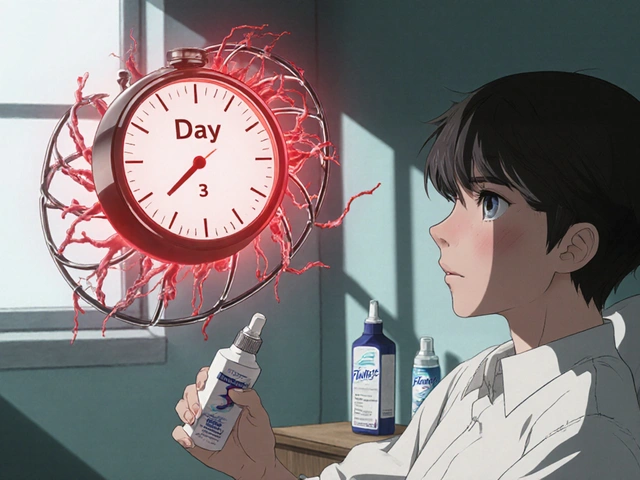Imagine you’re on three different pills for high blood pressure. One’s blue, one’s white, one’s green. You have to remember which one to take when, how many of each, and when to refill them. Now imagine there’s a single pill that does the same job-same ingredients, same dose, just one tablet. Why would anyone choose the three-pill version?
It’s called a de facto combination: when doctors prescribe separate generic drugs instead of a single fixed-dose combination (FDC) that contains the same active ingredients. It’s not illegal. It’s not rare. In fact, it’s common-especially in conditions like hypertension, diabetes, and HIV. But it’s not always the smartest choice.
What Exactly Is a Fixed-Dose Combination (FDC)?
An FDC is one pill that contains two or more active drugs in a fixed ratio. Think of it like a pre-mixed smoothie: you get everything you need in one sip. Common examples include pills that combine amlodipine and valsartan for blood pressure, or metformin and sitagliptin for type 2 diabetes.
These aren’t just convenience products. Before an FDC gets approved by the FDA or EMA, it must prove that:
- Each drug in the combo actually helps
- The combination works better-or at least no worse-than taking the drugs separately
- The doses are safe together
- The pill stays stable over time and releases the drugs properly in your body
That’s a lot of testing. And it’s why FDCs cost more to develop. But once they’re on the market, they can be cheaper for patients-especially if they reduce the number of pills you need to buy and take.
Why Do People Choose Separate Generics Instead?
There are three big reasons people end up on separate generics instead of an FDC: cost, dosing flexibility, and lack of available options.
Cost is often the biggest driver. In places like the U.S. and India, generic versions of individual drugs can be dirt cheap-sometimes less than $5 a month per drug. Meanwhile, the branded FDC version might cost $50 or more. Even if a generic FDC exists, it might still be priced higher than buying the two generics separately, especially if multiple manufacturers are competing on price.
Dosing flexibility is another major reason. Let’s say you need 5 mg of amlodipine and 80 mg of valsartan. But the only FDC available is 10 mg / 160 mg. You’d be forced to take half a pill-or take two separate pills to get the right dose. For patients with kidney disease, liver problems, or older adults who need precise dosing, that flexibility isn’t a luxury-it’s a necessity.
Lack of FDC options also plays a role. Not every drug combo has an approved FDC. In some cases, the combination is too new, too niche, or not profitable enough for a company to develop one. So doctors default to prescribing the individual generics they know work.
The Hidden Risks of De Facto Combinations
Here’s the problem: when you mix separate generics, you’re bypassing all that safety testing.
FDCs are tested as a unit. The manufacturer checks how the drugs interact in the same tablet. Do they break down too fast? Do they interfere with each other’s absorption? Is the tablet stable over 24 months? With de facto combinations, none of that is checked.
And it’s not just about stability. Generic drugs aren’t all the same. A 2020 FDA analysis found that 12.7% of generic products had clinically meaningful differences in how quickly they released the drug into your bloodstream. That might not matter for a single drug-but when you’re combining two or more, even small differences can throw off your entire treatment.
Then there’s adherence. Every extra pill you take reduces your chance of sticking to the regimen. A study in PubMed found that each additional pill cuts adherence by about 16%. Patients on FDCs are 22% more likely to take their meds regularly than those on multiple separate pills.
One patient on Reddit shared: “My doctor switched me from a single Amlodipine/Benazepril pill to two separate generics to save $15 a month. I missed doses twice because I forgot which blue pill was which.”
That’s not just inconvenient-it’s dangerous. Missed doses mean uncontrolled blood pressure, higher risk of stroke, more hospital visits.

When Are De Facto Combinations Actually the Right Choice?
It’s not all bad. Sometimes, separate generics are the only sensible option.
Take diabetes. A patient with kidney problems might need 500 mg of metformin and 25 mg of sitagliptin. But the only FDC available is 1000 mg / 50 mg. Taking half a pill isn’t safe or accurate. In that case, prescribing separate generics lets the doctor fine-tune the dose.
Same with HIV. Some patients need dose adjustments based on weight, liver function, or drug interactions with other meds. FDCs often can’t offer that level of customization. So doctors stick with separate pills-because the alternative is worse.
And in places like India, where 344 FDCs were banned for lacking medical justification, de facto combinations became the default. In those cases, the problem isn’t the practice-it’s the lack of good FDC options.
What Can Be Done to Make It Safer?
If you’re on separate generics, here’s what you can do to reduce risk:
- Use a pill organizer with clear labels. Color-coding helps-blue for one drug, green for another.
- Sync your refills. Make sure all your meds are due on the same day. That reduces the chance of running out of one and forgetting to refill.
- Ask your pharmacist if the generics you’re taking have been tested together. Some pharmacies now offer combination packaging with counseling.
- Ask your doctor: “Is there an FDC that could work for me?” Don’t assume the separate pills are the only option.
Health systems can help too. The Institute for Safe Medication Practices recommends:
- Electronic prescribing systems that flag unsafe combinations
- Pharmacist-led medication reviews for patients on multiple pills
- Automated refill reminders tied to specific medications
Companies like PillPack (owned by Amazon) already do this. They pre-sort meds into daily packets with clear labels. Their data shows a 41% drop in adherence errors for patients on de facto combinations.
The Future: Better FDCs, Smarter Systems
The tide is turning. The FDA and EMA are paying more attention to de facto combinations. In January 2023, the FDA issued a safety alert after 147 adverse events were linked to untested drug combos.
Meanwhile, companies are designing smarter FDCs. AstraZeneca just patented a modular FDC system that lets you swap out doses like Lego pieces-keeping the convenience of one pill but allowing customization.
And AI is helping. Delta4 AI used machine learning to find new, safe combinations for rare diseases-proving that smart science can solve the problems that led to de facto combinations in the first place.
By 2030, experts predict that unmonitored de facto combinations will drop by 60%. Why? Because electronic health records will start auto-flagging them. Pharmacies will push FDCs when they’re appropriate. Patients will get better support.
But until then, the choice isn’t always clear-cut. Sometimes, separate generics are the best option. Other times, they’re a risky shortcut.
The key is knowing the difference-and asking the right questions.
Are de facto combinations illegal?
No, they’re not illegal. Doctors can legally prescribe separate generic drugs even when an FDC exists. But they’re not regulated like FDCs, which means safety testing isn’t required. That’s why experts call them "unofficial" or "off-label" combinations.
Do de facto combinations save money?
Sometimes. In markets with strong generic competition, buying two separate generics can cost less than a branded FDC. But generic FDCs are becoming more common-and often cost the same or less than buying the pills separately. Always check with your pharmacy. The savings aren’t guaranteed.
Why do doctors prescribe separate pills instead of FDCs?
Three main reasons: cost, dosing needs, and availability. If a patient needs a specific dose that isn’t available in an FDC, or if the FDC is too expensive, doctors turn to generics. Sometimes, it’s just habit-especially if the doctor isn’t aware of newer FDC options.
Can mixing generics cause side effects?
Yes. Even if each drug is safe alone, combining them without testing can lead to unexpected interactions. For example, one generic might release the drug faster than another, causing a spike in blood levels. Or the pills might not be stable together in your body. These risks aren’t tracked because de facto combos aren’t studied as units.
Should I switch from separate pills to an FDC?
Ask your doctor. If you’re taking two or more pills daily, an FDC might improve adherence and simplify your routine. But if your dose needs to be finely tuned-say, because of kidney or liver issues-separate generics might still be better. Don’t switch without talking to your provider.
Final Thoughts
De facto combinations aren’t inherently bad. They’re a practical workaround for real problems: cost, dosing, and limited options. But they come with hidden risks-risks most patients don’t even know about.
The goal shouldn’t be to ban them. It should be to make them safer. Better tools. Better information. Better support.
Because when you’re managing a chronic condition, the right pill-not just any pill-is the one that keeps you healthy, not just the one that’s cheapest or easiest to prescribe.





Let me tell you something they don’t want you to know-this whole FDC thing is a pharmaceutical scam disguised as convenience. The big drug companies push these combo pills because they can charge 10x more under a new patent, even when the ingredients are 20 years old. Meanwhile, your doctor gets kickbacks from reps who hand them free samples of the branded combo. They don’t care if you can’t afford it-they care about their quarterly earnings. I’ve seen it firsthand: my cousin was switched from $3/month generics to a $75 FDC ‘for her own good.’ Turns out, the FDC had a filler that gave her rashes. No one tested it. No one cares. This isn’t medicine-it’s corporate exploitation wrapped in a white pill.
There’s a legitimate point here about dosing flexibility, but the article oversimplifies the cost issue. In many states, Medicare Part D plans have tiered formularies where FDCs are classified as Tier 2 while individual generics are Tier 1. That means lower copays for separate pills-even if the list price is higher. Also, pharmacy benefit managers often negotiate bulk discounts on individual generics that don’t extend to FDCs. It’s not just about the pill cost-it’s about how insurance layers work. The real problem is lack of transparency, not patient choice.
It is imperative to underscore the clinical significance of adherence in chronic disease management. Empirical data consistently demonstrate that patients prescribed fixed-dose combinations exhibit significantly improved medication-taking behavior, as documented in multiple peer-reviewed studies published in The New England Journal of Medicine and The Lancet. Furthermore, the pharmacokinetic variability inherent in concomitant administration of multiple generic formulations introduces unquantifiable risk. The absence of bioequivalence testing for combination regimens represents a critical gap in pharmacovigilance. Patients must be empowered with evidence-based information to make informed decisions-not merely cost-driven ones. Consultation with a clinical pharmacist is strongly recommended in all cases of polypharmacy.
Isn’t it ironic? We live in a world where we can customize our coffee to the exact bean roast and milk temperature, but when it comes to our own biology, we’re told to swallow whatever pill the system gives us. The de facto combination is just another symptom of medicine’s failure to treat people as individuals. It’s not about cost or convenience-it’s about control. Who gets to decide what your body needs? The FDA? The pharmacist? Or you? Maybe the real question isn’t whether to take one pill or three… but who gets to write the prescription for your life.
Okay but let’s be real-FDCs are just pharma’s way of locking you into their ecosystem. They’re not ‘safer.’ They’re just patented. Meanwhile, the FDA approves generics based on bioequivalence, which means they’re allowed to vary by up to 20% in absorption. So if you’re taking two generics, you’re already dealing with a 40% variability window. A single FDC? Still 20%. So what’s the difference? Nothing. It’s a marketing gimmick wrapped in ‘science.’ And don’t get me started on those ‘modular Lego’ FDCs-sounds like a Silicon Valley fantasy. Real medicine doesn’t come in snap-together kits.
Ugh. I just take my pills. Don’t care if it’s one or three. I forget half the time anyway.
Think about this: every pill you swallow is a tiny act of trust. You trust the chemist who mixed it. You trust the FDA who approved it. You trust the doctor who wrote it. But when you take three separate generics? You’re trusting three different companies, three different labs, three different batches-each with their own quality control, their own hidden fillers, their own silent failures. And you think that’s safe? That’s not medicine. That’s Russian roulette with your heart. I’ve seen people die because their blood pressure spiked from a bad batch of generic amlodipine. No one tracks that. No one even counts it. We’re not treating disease-we’re gambling with organ failure. And they call this progress?
There’s a deeper rhythm here, you know? We live in a world that rewards efficiency-fast food, one-click shopping, streaming in HD. But our bodies don’t operate on efficiency. They operate on nuance. The FDC is the promise of simplicity. The separate pills? The messy truth. Sometimes, the body needs to be treated like a garden-not a machine. You don’t just dump fertilizer and call it done. You adjust for soil, season, sunlight. That’s what dosing flexibility is. And yeah, maybe it’s more work. But work that honors the complexity of human biology. Maybe the real problem isn’t the three pills-it’s our obsession with making everything fit into one neat box.
Oh wow. A whole article about pills and nobody mentioned the real villain: the pharmacy technician who hands you your meds without a word. I once got three separate blood pressure pills in three different bags, no labels, no instructions. I thought it was a joke. Turned out, the system didn’t even flag it as polypharmacy. The pharmacist was on break. The tech was texting. And here I am, holding a bag of mystery pills like I’m in a spy movie. This isn’t healthcare. It’s a broken assembly line with a white coat. If you want better outcomes, start by training the people who hand out the pills-not just the doctors who write them.
In India, we have seen both sides of this coin. Many patients take separate generics because FDCs are either unavailable or too expensive. But we also know that when patients are educated and supported-through community health workers, local clinics, and pill organizers-the adherence improves dramatically. It is not always about the pill. It is about the system around it. We must not blame the patient for choosing what they can afford. Instead, we must build systems that make the right choice the easy choice. Simple tools, clear labels, and compassionate care can go further than any patented combination.
For anyone reading this who is on multiple generics: please, please, please talk to your pharmacist. They are trained to spot dangerous interactions, check for bioequivalence issues, and even help you get generic FDCs at lower prices through patient assistance programs. Most people don’t realize pharmacists can do more than fill prescriptions-they can be your safety net. Schedule a med review. Bring all your bottles. Ask, ‘Are these safe together?’ It takes 15 minutes. It could save your life.
Look, I get it. You want to save money. But if you’re skipping doses because you’re confused, you’re costing the system way more in ER visits and hospital stays. That $15 you saved on pills? It’s going to cost $15,000 in ambulance rides. Stop being cheap with your health. Get the FDC. Use a pillbox. Set alarms. Your future self will thank you. This isn’t about being perfect-it’s about being smart. And being smart means choosing the path that actually works, not the one that looks cheaper on paper.
Thank you for this article-it’s so important to talk about this. I’ve been on separate generics for years, and I never realized how risky it was until I started using a color-coded pill organizer. Now, I refill everything on the same day, and I even take a picture of my pill tray every morning. It’s not glamorous, but it’s kept me out of the hospital. I wish more doctors would say this out loud: ‘Your health is worth the extra effort.’